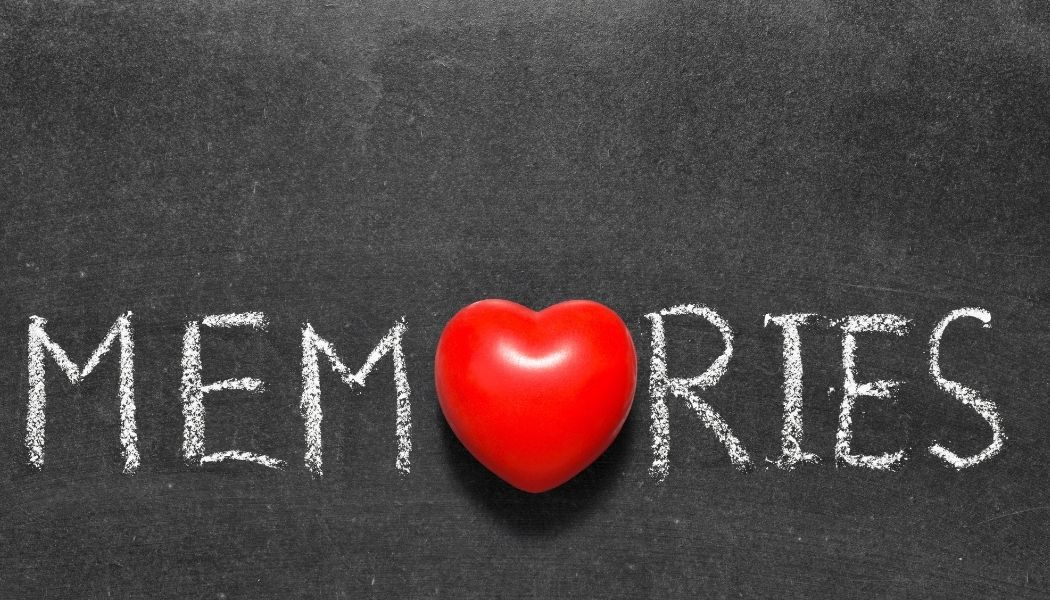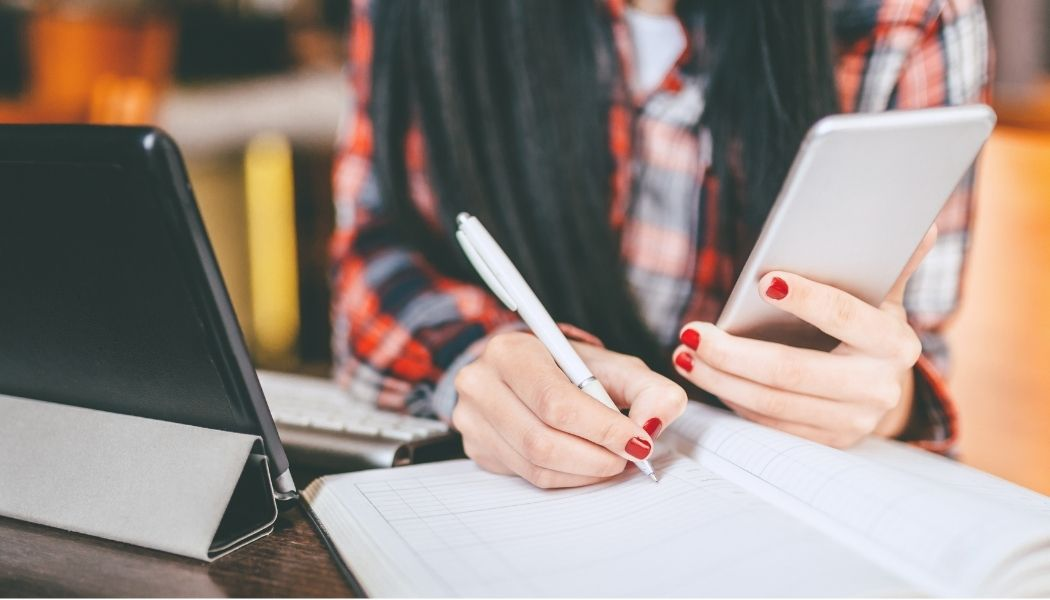Each of us cope with our emotions in our own way. Some people listen to music, some people watch movies, and some people go out. These activities provide comfort and a temporary escape from reality. We all need an outlet to express our negative emotions and one example of a good outlet is keeping a journal.
Journals are notebooks you store all your thoughts and experiences in. The term journal is often used interchangeably with diary but they are two different things. Diaries talk about your day-to-day life, whereas journals are used to record your observations and goals. There are different types of journals – reflective, food, travel, gratitude, and goals journal. There is one type of journal that combines the elements of different types of journals into one and it’s called a visual journal.
What is a visual journal?
A visual journal is a reflective journal that includes sketches or images instead of words and sentences. Visual journals are used to record their experiences and emotions through drawing and art. Many researchers consider visual journals as a form of therapy. One research in 2019 reported that visual journaling allows people with trauma to explore their inner selves through images that words cannot express. The participants in the research can overcome their trauma by acknowledging it in their visual journals.
One notable thing to remember is the purpose of a visual journal is not to draw art but to reflect on emotions through art creation. People who create these journals use art to express their experiences and feelings in pictures instead of writing them down in words. Visual journals are for everyone and are not exclusive to artists. As long as you cab share your thoughts and emotions visually – or using various art materials and images – you can start your own visual journal.
How can you start a visual journal?

There is no exact guide to get you started on creating your visual journal. You have the freedom to plan and create based on your personal preference and your availability.
Have a designated writing schedule
One of the things you need to do is have a scheduled time of the day when writing an entry for your visual journal. Creating a log at the end of your day will allow you to reflect on your accomplishments and set your plans for tomorrow. It only takes a few minutes before bedtime and writing one will benefit your mood and attitude the next day. If writing a journal entry every day is too much work, you can try scheduling it at least once a week. What's important is you keep up the consistency of creating a visual journal entry.
Gather all your materials
When creating your visual journal, you need to have art materials at your disposal. Your journal represents your thoughts and emotions, and having the proper materials will allow you to express yourself better. Here’s a small list of materials you should have:
- Coloring materials (markers, crayons, paint)
- Pencil and pens
- Magazine and newspapers
- Sketches and doodles
- Stickers
Express your emotions and feelings
After sitting down in your safe space and gathering all your materials, it is now time to create your visual journal entry. The primary goal of creating a visual journal is for you to express yourself better through art. One important thing to remember is that you don’t need your art to be perfect. That is not the purpose of your visual journal. Your work should make you feel comfortable and release your emotions rather than making you feel stressed about making it perfect.
Keep it somewhere safe
Most people keep their journals to themselves. They hide it under their beds or at the backside of a cabinet. You can also do the same to ensure that your journal is private. Your visual journal is like a door to your inner self and no one wants anyone entering that door without permission or consent.
Aside from considering the privacy of its contents, consider preserving your visual journals – especially the old ones. Store them somewhere that doesn't ruin the pages or the art. Your visual journals can be a recount of your growth, so to reread them in the future, it is in your best interest to keep them in good condition.
What can you add to your visual journal?

What's fun about visual journals is you can do anything you want with them. You can sketch, paint, or paste any picture you please – as long as it aligns with the visual aspect of your journal. If you're still feeling lost and want something to help you start, there are four visual journal components you can follow.
Research in 2021 listed four components of visual journaling for students.
- A notebook where you put all your thoughts and ideas, experiment, and explore. The notebook doesn't have to be expensive. Even notebooks you use in school are fine, as long as you have a space to draw or paste images.
- Various images or tactile materials to make your work more expressive. A visual journal doesn't have to be limited to doodles, paints, or sketches. You can make a collage or a mosaic out of magazines, newspapers, or printed pictures.
- A reflection of experiences alongside the images and the drawings they added. The sketches and pictures should carry the feelings and thoughts the author wants to tell.
- The last one is to use your journal outside the classroom. Although some teachers require their students to create one as an activity and project, students are also encouraged to continue using it in their homes and the community.
Even though these components are for students in the academic setting, you might find these tips helpful when you start your visual journal.
Tips for making a visual journal

Have freedom
Visual journals have no strict rules and conditions to follow. You can put things you’ve found laying around or paint using your fingers. Allowing yourself to be free and creative can make you feel inspired throughout the process. It can make you more confident about your work without too much pressure on making it the best artwork. And in the end, what you create will carry many memories of adventures.
End each entry with a reflection
While visual journals are full of images and drawings, this does not mean that you can’t put any text on it. In every journal entry you make, you should include a caption or a small text reflection that describes the meaning of your artwork.
Adding a caption at the bottom of your page or beside your drawing can help you figure out what that journal entry meant for you. For instance, you've drawn three calendula flowers. You can say in your caption that it is your birth flower, and you celebrated it with your mom and dad. Your caption doesn't have to be long sentences or a perfect written caption because that is not the focus of a visual journal. It is only there to help you reflect on your emotions.
Use different colors to express emotions
Various shades and tones of colors often connect to a specific meaning. Even the same type of flowers differ in effect depending on their color. If you have the art materials, then be sure to use them while you can.
Using colors helps you express your feelings quickly with the right choices of colors. According to a study in 2021, particular colors symbolize an emotion. For instance, red can mean both danger and love, green for calmness and success, and blue for peace. Using these colors in your artwork will make it visually appealing and give it depth and deeper meaning.
Benefits of creating a visual journal
Like journaling in general, visual journaling also has its share of benefits.
Enhances creativity
What sets visual journaling apart from other forms of journaling is its focus on the visual-artistic expression rather than on expressing thoughts and emotions through words. It allows people to explore the arts and develop their art skills and creativity. According to research in 2019, visual art journaling encourages creativity through storytelling and expression. Instead of using words to tell a story, individuals tell their story through drawing and images. This idea of boosting creativity using visual journaling is also the same with students from the UK. Another research from 2021 reported that 85% of student participants in theirstudy claimed that they became more creative when they used visual journals, while another 73% developed their artistic prowess by engaging in the creative process of visual journaling.
Improves mental health
People use visual journaling to cope with their emotions and express their negative thoughts. They convey their inner struggle through doodling or images rather than words. A visual journal is best for those who can't find the words to say or who are too young to speak their mind. For instance, a child that only knows how to draw and doesn't know how to talk yet.
Research in 2021 associated visual journaling with a form of therapy for people with childhood trauma. According to them, visual journaling served as an outlet for children to express their trauma and acknowledge it. After recognizing it, they can heal and move forward from their traumatic experiences.
Aside from that, making a journal entry for your creative journal allows you to assess yourself by the end of the day. It will make you reflect on your feelings and experiences that day, which is beneficial for building your emotional resiliency.
Develops visual literacy skills
Visual literacy is the ability to assess, interpret, create, and make meaning out of visual media. In today's information age, visual literacy skills are essential to staying informed and not being fooled by fake news. Having literacy skills encourages a person to think critically and scrutinize the information on the internet. According to an editorial article in 2019, visual journaling can develop visual literacy skills. Perhaps the reason is that those who create visual journals expose themselves to images and other forms of visuals every time they make a journal entry. As people create and engage in visual journaling, they can develop critical thinking and collaboration skills.
Importance of keeping a visual journal
The most important question is, why do we need to create a visual journal? The answer is visual journaling still has lots of things to offer aside from its benefits to our health, creativity, and skills.
To self-reflect
The purpose of a visual journal is to reflect on thoughts and emotions. Self-reflection allows us to assess our situation, look back on the memories we had, and develop as a person. Visual journal are a great medium to do all of those things. According to a study in 2021, visual journals allow students to get to know themselves better, find their identities, and acknowledge their self-doubt. When we write down our feelings for the day or the week, we can ask ourselves questions based on our personal goals. Did I do well in school? Am I able to accomplish my plans? What things do I want to do in the future? Those are the questions you might've asked yourself. This self-reflection leads to personal development.
To keep important memories
Like diaries, visual journals can also retell what happened to you in the past few months or even years. Since it includes both drawings and pictures, you can use use visual journals to compile all your memorable experiences throughout your life. It can be a picture of you going out with your family or with your friends, or anything memorable in general. The opportunity to recollect and reminisce your memories and experiences can help you reflect and grow because you can see how far you've come and what battles you overcame.
To have personal growth
The memories you keep in your visual journal also retell your development during the time you spent creating your journal entries. You will be able to see that you overcame some struggles – whether it be about your image, work, school, and family – and strive to become better as a person. You can also use your mistakes as a starting point for your plan to change.
Aside from personal and life development, visual journaling also develops a person's artistic skills. The habit of constantly drawing every day or every month will cultivate your skills as an artist. So you while you might not start as an artist when you first start out with visual journaling, you might end up one if you continue creating journal entries.
To have a safe space to share thoughts and emotions
When you share your thoughts and emotions with someone, you can experience unnecessary judgment from them. The possible stigma and discrimination from other people can lead to mental health issues. The good thing is that a visual journal provides a safe space where people can express their emotions freely without other people's judgment. Research in 2019 mentioned how visual journals serve as a safe place that gives people the freedom to express themselves – especially those with traumatic experiences. They are less likely to experience judgment from other people because it is a personal account that only they can see. When dddople feel comfortable with expressing themselves, they can gain confidence. The newfound confidence will help them express themselves better and try new things in life.
Conclusion
Sharing your thoughts and emotions through visual journals is one of the good ways to cope. It will not only improve your art in some way, but it'll also give you the safe space you need. Creating an art journal is easy, and there are no rules to making one. So don't be afraid to start, paste and draw.
Fluently Asked Questions (FAQs)
What are the best art journals?
The best art journals are the ones that fit your needs and preferences. Some people prefer simple journals while others like more complex ones. It all depends on what you're looking for. For example, some individuals will like watercolor paper, which is more thicker paper than regular art paper. Other like journals with blank page so that they can create their own self-expression.
Why do so many people practice visual journaling or art journaling?
There are many reasons why people practice visual journaling or art journaling. Some people do it for fun, while others do it for self-reflection and personal growth. It is a way for people to express their thoughts and emotions in a safe space. Art journaling is seen as art therapy, which is beneficial for mental health.
Do you need to be a creative person to start an art journaling journey?
No. Most individuals think they need to be a "creative" person to start art journaling. However, that is not the case. Art journaling is for everyone. It's a way for people to express their thoughts and emotions through art and put their own personal meaning behind what they create. So whether you're creative or not, you can still start an art journaling journey.